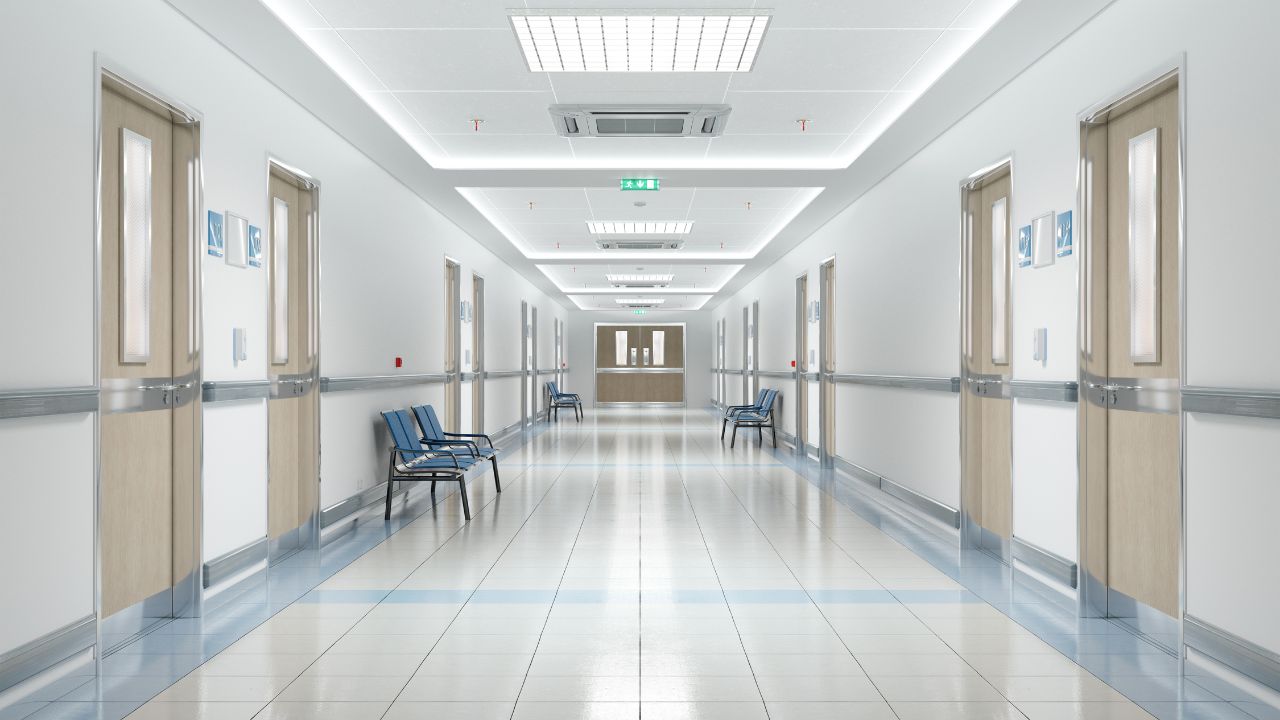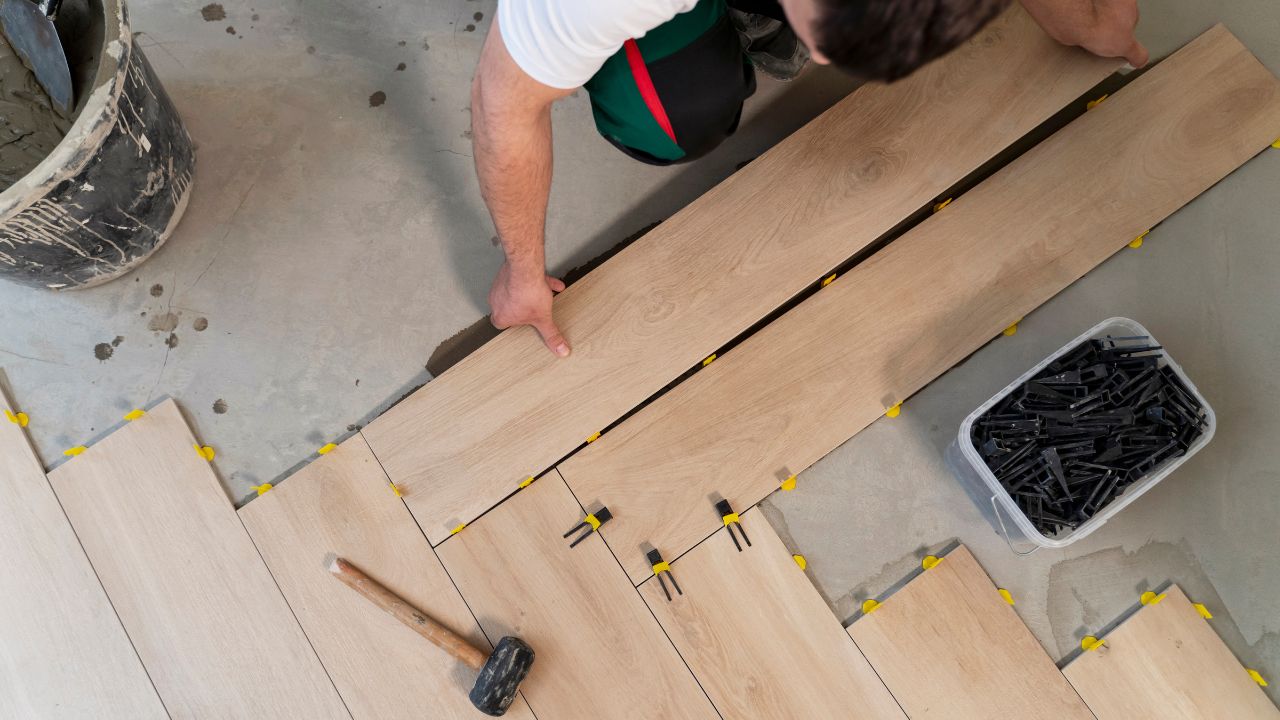Hospital Building Flooring Takeoff Service
At Estimate Florida Consulting, our expert team provides comprehensive takeoff services for both commercial and residential flooring projects. We offer detailed estimates and precise budgeting to ensure the success of your construction or renovation. Our services include material quantity takeoffs, cost estimation, and financial planning tailored to your specific project needs. Whether it’s hardwood, tile, carpet, vinyl, laminate, or any other type of flooring, we deliver accurate and reliable takeoffs. For commercial spaces, we focus on durability and high-traffic solutions, while for residential properties, we ensure aesthetic and functional flooring.
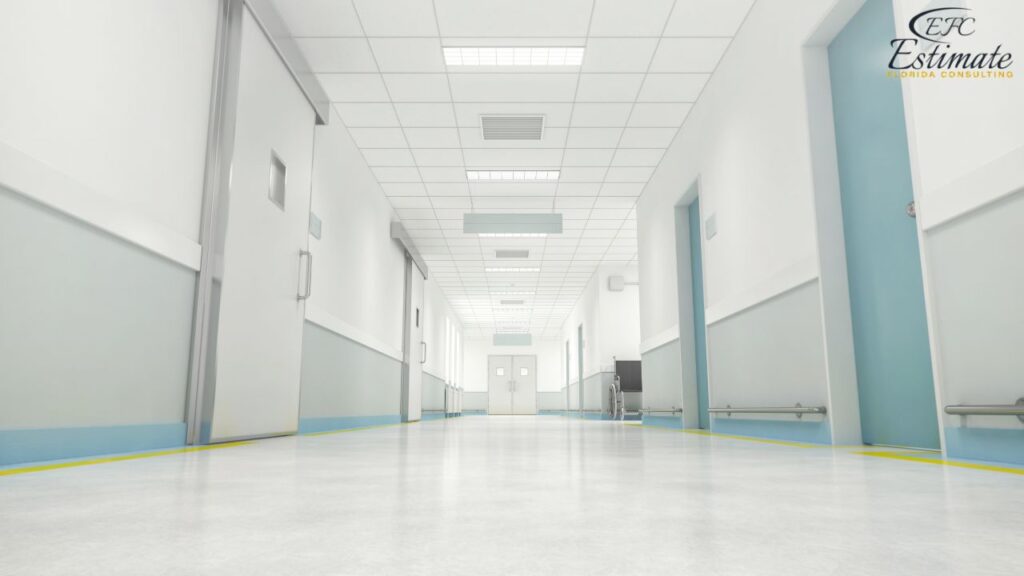
Hospital Flooring Cost Per Square Foot
Flooring costs for hospital buildings exhibit significant variability based on individual requirements. Installation expenses can range from $4 to $24 per square foot, totaling $1,500 to $11,000 for 500 square feet. The national average for flooring installation stands at approximately $10 per square foot or $4,000 for 500 square feet, encompassing material and labor costs. These figures underscore the importance of meticulous planning and budgeting to ensure alignment with financial parameters. Additionally, factors such as material type, quality, and installation complexity contribute to the overall cost equation. For hospital flooring, considerations include durability, hygiene, and safety standards, which can influence both the choice of materials and the cost of installation.
Square Feet | Cost Range |
500 | $2,000 – $12,000 |
1000 | $4,000 – $24,000 |
1500 | $6,000 – $36,000 |
2000 | $8,000 – $48,000 |
3000 | $10,000 – $60,000 |
Hospital Building Cost by Flooring Type
When it comes to hospital building flooring, there’s an extensive array of options available, ranging from basic and economical choices like vinyl or carpet to luxurious and extravagant selections such as mahogany hardwood. Each flooring material carries its own distinct price tag, which can vary significantly. Even within the same category of material, prices can fluctuate based on factors such as quality, brand reputation, and regional availability.
It’s advisable to have a rough estimate in mind for the different types of flooring before reaching out to contractors. The following chart provides an overview of installation costs per square foot for various flooring types:
Flooring Type | Cost per square foot | Cost per 500 sq. ft. | Cost per 1000 sq. ft. | Cost per 1500 sq. ft. |
Hardwood | $6.60 – $22.00 | $3,300 – $11,000 | $6,600 – $22,000 | $9,900 – $33,000 |
Carpet | $1.10 – $6.60 | $550 – $3,300 | $1,100 – $6,600 | $1,650 – $9,900 |
Tile | $3.30 – $22.00 | $1,650 – $11,000 | $3,300 – $22,000 | $4,950 – $33,000 |
Laminate | $2.97 – $12.10 | $1,485 – $6,050 | $2,970 – $12,100 | $4,455 – $18,150 |
Vinyl | $2.20 – $3.30 | $1,100 – $1,650 | $2,200 – $3,300 | $3,300 – $4,950 |
Linoleum | $2.20 – $7.15 | $1,100 – $3,575 | $2,200 – $7,150 | $3,300 – $10,725 |
Bamboo | $5.50 – $16.50 | $2,750 – $8,250 | $5,500 – $16,500 | $8,250 – $24,750 |
Cork | $5.50 – $13.20 | $2,750 – $6,600 | $5,500 – $13,200 | $8,250 – $19,800 |
Concrete | $3.30 – $8.80 | $1,650 – $4,400 | $3,300 – $8,800 | $4,950 – $13,200 |
Engineered Hardwood | $4.40 – $17.60 | $2,200 – $8,800 | $4,400 – $17,600 | $6,600 – $26,400 |
Hardwood
Hardwood flooring is renowned for its timeless appeal and enduring quality. Crafted from solid wood planks, hardwood floors offer natural warmth and beauty that enhance any hospital space. With proper care and maintenance, hardwood floors can last for generations, developing a rich patina over time that adds to their charm. From traditional oak and maple to exotic species like Brazilian cherry and acacia, the range of hardwood options allows healthcare facilities to choose a style that complements their design and functional needs.
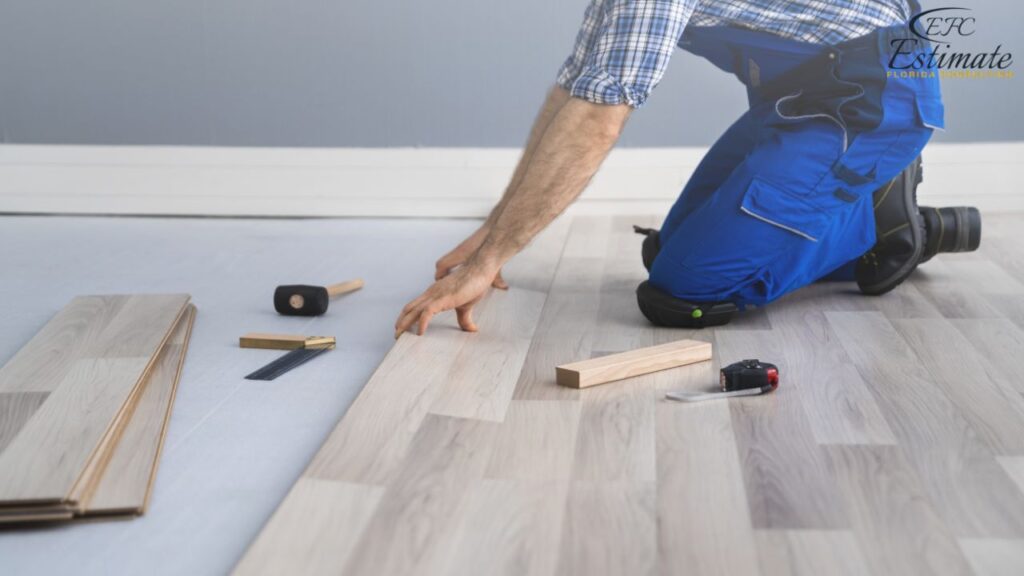
Carpet
Carpet flooring provides a cozy and inviting feel to hospital rooms and waiting areas while offering sound insulation and comfort underfoot. Available in a wide variety of pile heights, textures, and colors, carpet allows for endless design possibilities. From plush, luxurious carpets for patient rooms to durable, stain-resistant options for high-traffic areas like hallways and lobbies, carpeting can be tailored to suit the specific needs of healthcare environments.
Tile
Tile flooring offers unmatched durability and versatility, making it an ideal choice for areas that experience heavy foot traffic and moisture exposure in hospitals. Ceramic, porcelain, and natural stone tiles are all popular options, each offering unique aesthetic qualities and practical benefits. Ceramic and porcelain tiles are known for their durability and low maintenance requirements, making them suitable for both indoor and outdoor use. Natural stone tiles, such as marble, travertine, and slate, add a touch of luxury and sophistication to any space, with each piece bearing distinctive variations in color and texture.
Laminate
Laminate flooring provides the look of hardwood, tile, or stone at a more affordable price point, making it a popular choice for budget-conscious healthcare facilities. Constructed from multiple layers of compressed materials, laminate flooring is highly resistant to scratches, stains, and fading, making it ideal for areas with heavy use. With its easy click-and-lock installation system, laminate flooring can be quickly and easily installed over existing subfloors, saving both time and money on labor costs.
Vinyl
Vinyl flooring is a versatile and cost-effective option that offers both durability and style for hospitals. Available in a wide range of designs, including wood, stone, and tile patterns, vinyl flooring allows healthcare facilities to achieve the look of natural materials without the associated maintenance requirements. Waterproof and easy to clean, vinyl flooring is an excellent choice for areas prone to spills and moisture, such as patient rooms and bathrooms. Additionally, vinyl flooring is softer and warmer underfoot than many other flooring options, making it a comfortable choice for staff and patients alike.
Linoleum
Linoleum flooring is a natural and eco-friendly option made from renewable materials such as linseed oil, cork dust, and wood flour. With its durable and resilient surface, linoleum flooring is resistant to scratches, stains, and water damage, making it an ideal choice for high-traffic areas in hospitals. Available in a wide range of colors and patterns, linoleum flooring offers endless design possibilities, allowing healthcare facilities to create custom looks that reflect their institutional style and promote a healing environment.
Bamboo
Bamboo flooring is a sustainable and environmentally friendly option that offers both beauty and durability. Harvested from rapidly renewable bamboo plants, bamboo flooring is highly resistant to moisture, insects, and wear, making it an excellent choice for busy hospital areas. With its distinctive grain patterns and warm tones, bamboo flooring adds a touch of natural elegance to any interior space. Additionally, bamboo flooring is easy to maintain and can be refinished to restore its original luster, ensuring years of lasting beauty and performance.
Download Template For Flooring Project Breakdown
- Materials list updated to the zip code
- Fast delivery
- Data base of general contractors and sub-contractors
- Local estimators
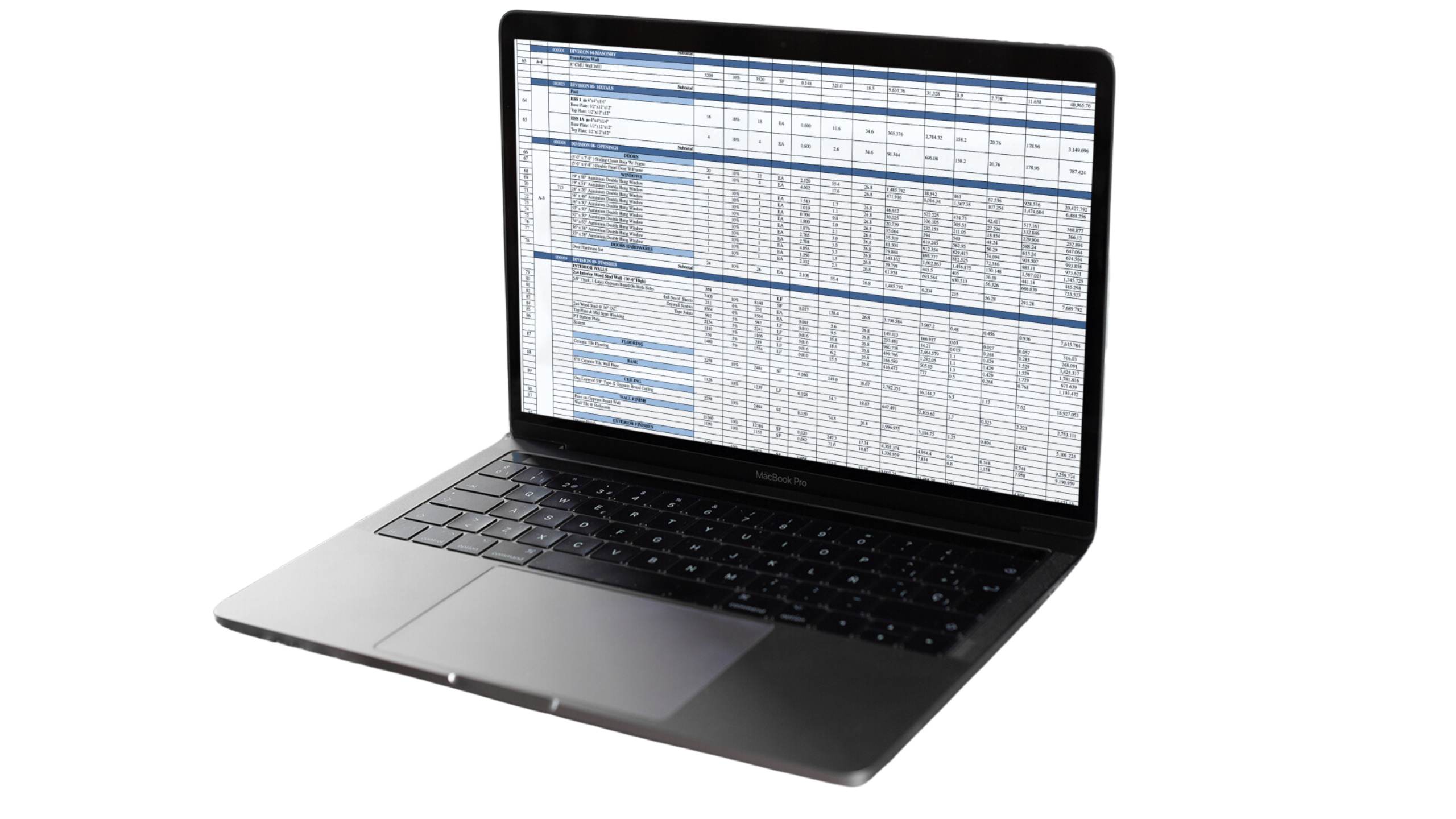
Cork
Cork flooring is a natural and renewable option made from the bark of cork oak trees. With its unique cellular structure, cork flooring offers natural thermal and acoustic insulation properties, helping to reduce energy costs and noise levels within hospital settings. Soft and comfortable underfoot, cork flooring is ideal for areas where prolonged standing is common, such as nursing stations and treatment rooms. Additionally, cork flooring is hypoallergenic and resistant to mold, mildew, and pests, making it a healthy choice for hospitals focused on maintaining a clean and safe environment.
Concrete
Concrete flooring is a modern and industrial-chic option that offers durability and versatility. With its sleek and minimalist aesthetic, concrete flooring is a popular choice for contemporary hospital designs. Available in a variety of finishes, including polished, stained, and stamped, concrete flooring can be customized to suit any design aesthetic. Additionally, concrete flooring is highly durable and low maintenance, making it ideal for high-traffic areas such as emergency rooms, laboratories, and public spaces.
Engineered Hardwood
Engineered hardwood flooring offers the beauty of hardwood with added stability and versatility. Constructed from multiple layers of wood veneer bonded together with adhesives, engineered hardwood flooring is less susceptible to expansion and contraction due to changes in humidity and temperature, making it suitable for installation in areas where traditional hardwood may not be recommended, such as hospital basements and bathrooms. With its wide range of finishes and styles, engineered hardwood flooring provides healthcare facilities with the look and feel of solid hardwood with added durability and performance.
Hospital Building Flooring Patient Rooms
Selecting flooring for patient rooms in a hospital involves balancing cost with durability and patient comfort. Vinyl flooring, typically priced between $3 to $7.50 per square foot, offers a resilient and easy-to-clean surface suitable for patient rooms. Rubber flooring, ranging from $6 to $15 per square foot, provides added comfort and noise reduction. Installation costs, varying based on project complexity, generally fall between $1.50 to $3 per square foot. Additional expenses may include subfloor preparation and removal of existing flooring, which can add $1.50 to $3per square foot.

While initial costs are important, it’s crucial to consider long-term maintenance expenses and the flooring’s ability to withstand heavy foot traffic and medical equipment, ensuring a safe and hygienic environment for patients.
Flooring Type | Price Range per Square Foot | Installation Cost per Square Foot | Additional Costs per Square Foot |
Vinyl | $3.00 – $7.50 | $1.50 – $3.00 | $1.00 – $2.50 |
Rubber | $6.00 – $15.00 | $1.50 – $3.00 | $1.00 – $2.50 |
Hospital Building Flooring for Operating Rooms
Selecting flooring for hospital operating rooms requires meticulous consideration of cost alongside stringent standards for cleanliness and safety. Sheet vinyl with heat-welded seams, priced between $9.00 to $18.00 per square foot, ensures a seamless, sterile surface. Conductive vinyl, ranging from $11.25 to $22.50 per square foot, dissipates static electricity, crucial for sensitive equipment. Epoxy flooring, costing $12.00 to $30.00 per square foot, offers exceptional durability and chemical resistance. Installation expenses typically range from $3.00 to $7.50 per square foot, with additional costs for preparation and removal averaging $3.00 to $7.50 per square foot. While initial costs are vital, prioritizing long-term maintenance and regulatory compliance ensures an optimal environment for surgical procedures.
Flooring Type | Price Range per Square Foot | Installation Cost per Square Foot | Additional Costs per Square Foot |
Sheet Vinyl with Heat-Welded Seams | $9.00 – $18.00 | $3.00 – $7.50 | $3.00 |
Conductive Vinyl | $11.25 – $22.50 | $3.00 – $7.50 | $3.00 |
Epoxy Flooring | $12.00 – $30.00 | $4.50 – $7.50 | $4.50 |
Hospital Building Flooring Corridors and High-Traffic Areas
Selecting flooring for hospital corridors and high-traffic areas requires careful consideration of cost, durability, and safety. For these spaces, options like luxury vinyl tile (LVT), priced between $6 to $12 per square foot, offer a balance of aesthetic appeal and resilience. Terrazzo flooring, costing $15 to $45 per square foot, provides exceptional durability ideal for heavy foot traffic. Installation costs typically range from $3 to $7.50 per square foot. Additional expenses, such as subfloor preparation and removal of existing flooring, average $3 to $7.50 per square foot. Prioritizing long-term maintenance and durability ensures these areas can withstand constant use while maintaining a safe and welcoming environment for patients, staff, and visitors.
Flooring Type | Price Range per Square Foot | Installation Cost per Square Foot | Additional Costs per Square Foot |
Luxury Vinyl Tile (LVT) | $6.00 – $12.00 | $3.00 – $7.50 | $3.00 – $7.50 |
Terrazzo Flooring | $15.00 – $45.00 | $4.50 – $11.25 | $4.50 – $11.25 |
Factors Affecting Flooring Costs
When embarking on a hospital flooring project, understanding the various factors influencing overall costs is crucial. Here’s an in-depth exploration of what affects expenses:
Flooring Materials
The choice of flooring material significantly impacts total costs. For hospitals, durability, hygiene, and safety are paramount. Hardwood options range from traditional oak to exotic species, each with its own price point. Carpet prices vary based on pile type and fiber composition. Tiles, spanning from ceramic to natural stone, offer durable and versatile options. Laminate and vinyl provide budget-friendly alternatives, while specialty materials like bamboo and cork offer unique characteristics and price tags.
Labor
Professional installation ensures proper fitting and longevity of hospital floors, but skilled labor comes at a price. Factors such as installation complexity, subfloor preparation, and any special requirements influence labor costs.
Underlayment
Often overlooked but crucial, underlayment serves various purposes depending on the flooring type. It helps prevent cracks and ensures evenness for tile installations, while providing insulation, moisture protection, and noise reduction for hardwood floors. Choosing the right underlayment enhances the overall performance and comfort of hospital floors.
Removal
The cost of removing old flooring adds to the project’s expenses. Contractors may include removal in their services or charge separately. Unforeseen issues like subfloor damage or hazardous materials such as mold or asbestos can further inflate removal costs. Mold remediation typically ranges from $10 to $25 per square foot, while asbestos removal costs start at $75 to $200 per hour.
Flooring Size
The size of the hospital area being floored directly impacts total costs. Larger projects may qualify for discounted rates per square foot, as contractors achieve economies of scale. Conversely, smaller spaces may incur higher costs due to minimum project requirements or complexities in installation.
Functionality of the Area
Understanding how each hospital space will be used aids in selecting the most suitable flooring material. High-traffic areas like hallways and entryways benefit from durable options such as tile or stone, which offer long-term savings in maintenance and replacement. Considerations such as moisture resistance, ease of cleaning, and aesthetic appeal also influence material choices for different hospital rooms.
Cost of Removing Existing Flooring
When planning your hospital flooring project, it’s essential to consider the expenses associated with removing any existing flooring. This process entails more than simply pulling up old materials – it includes tasks such as removing baseboards, extracting nails or glue, and disposing of debris.
Typically, the cost of removing and disposing of old hospital flooring ranges from $1 to $4.50 per square foot. However, some contractors may include this service as part of their package, depending on various factors such as location, type of flooring, and installation method.
The complexity of the removal job can significantly impact the overall cost. For example, removing carpet that’s stapled or nailed down in a 12 x 12 area might take around 3 hours, with labor costs averaging $65 per hour. However, if the carpet is glued down, the process becomes more challenging and time-consuming, potentially increasing the overall expense.
Get 5 New Leads Next 7Days With Our System
- Multi-Family Building
- Hotel Building
- Hospital Building
- Warehouse Building
- High-Rise Building
- Shopping Complex
Conclusion
Our hospital building flooring takeoff service at Estimate Florida Consulting offers a meticulous approach to estimating and budgeting for flooring projects, ensuring success in both commercial and residential settings. With a focus on accuracy and reliability, we provide detailed estimates tailored to specific project needs, encompassing a wide range of flooring types from hardwood to vinyl. Understanding the variability in costs due to factors like material type, quality, and installation complexity is crucial. Whether it’s selecting flooring for patient rooms, operating theaters, or high-traffic corridors, our services aim to balance cost-effectiveness with durability, safety, and aesthetic appeal. By considering the various factors affecting flooring costs, we strive to deliver comprehensive solutions that meet the unique requirements of each healthcare facility.
FAQs
We cover a wide range of flooring materials suitable for hospital buildings, including hardwood, tile, carpet, vinyl, laminate, and more. Our focus is on durability and high-traffic solutions for commercial spaces and aesthetic and functional flooring for residential properties.
Several factors influence the cost of hospital flooring projects, including the choice of flooring material, labor costs, underlayment requirements, removal of existing flooring, the size of the area being floored, functionality of the space, and any additional customization or special requirements.
Hospital flooring costs vary depending on the type of flooring material selected and the specific requirements of the project. Installation expenses can range from $4 to $24 per square foot, with the national average standing at approximately $10 per square foot. Factors such as material type, quality, and installation complexity contribute to the overall cost equation.
The cost of removing and disposing of old hospital flooring typically ranges from $1 to $4.50 per square foot. However, the complexity of the removal job, including factors such as the type of flooring, adhesives used, and any unforeseen issues like subfloor damage, can impact the overall cost.
Depending on various factors such as location, type of flooring, and installation method, we may include removal of existing flooring as part of our services. Our goal is to provide comprehensive solutions tailored to your specific project needs and budget requirements.
To get an estimate for your hospital flooring project, simply reach out to our expert team at Estimate Florida Consulting. We’ll work closely with you to understand your project requirements, provide detailed cost estimates, and help you plan and budget for a successful construction or renovation project.
Google Reviews



Process To Get Hotel Building Flooring Estimate Report
Here I am going to share some steps to get hotel building flooring estimate report.
-
You need to send your plan to us.
You can send us your plan on info@estimatorflorida.com
-
You receive a quote for your project.
Before starting your project, we send you a quote for your service. That quote will have detailed information about your project. Here you will get information about the size, difficulty, complexity and bid date when determining pricing.
-
Get Estimate Report
Our team will takeoff and estimate your project. When we deliver you’ll receive a PDF and an Excel file of your estimate. We can also offer construction lead generation services for the jobs you’d like to pursue further.
Reach Out To Us
Places to visit if you new in Florida
Located in Orlando, this iconic destination is a dream come true for families and Disney enthusiasts alike. With four theme parks, two water parks, and countless entertainment options, it’s no wonder that Walt Disney World is one of the most visited vacation resorts in the world.
Famous for its glamorous beaches, vibrant nightlife, and Art Deco architecture, Miami Beach is a playground for sun-seekers and party-goers. South Beach, in particular, attracts visitors with its lively atmosphere and pristine sands.
Another gem in Orlando, Universal Orlando Resort offers thrilling rides, immersive attractions, and the magic of beloved movies and TV shows. From The Wizarding World of Harry Potter to adrenaline-pumping roller coasters, there’s something for everyone here.
This unique ecosystem is a UNESCO World Heritage Site and a haven for nature lovers. Visitors can explore the vast wetlands on airboat tours, spot alligators and diverse bird species, and learn about the importance of preserving this delicate environment.


